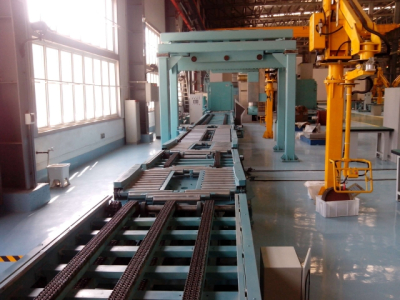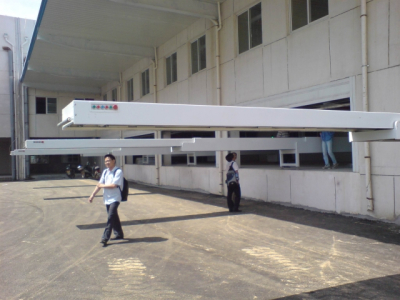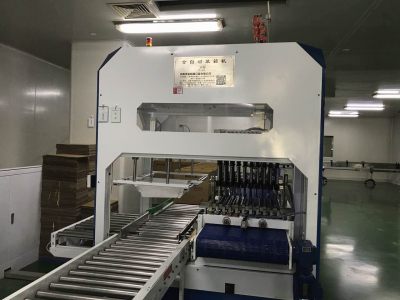Common e-commerce warehouse picking process
In traditional warehouses, the picking process does not rely on a system and is managed purely manually, which creates major problems and leads to inefficiencies and even many errors in the data. Therefore, the vast majority of companies nowadays are familiar with the picking method and the seeding method and apply them to operation and production. There is no advantage or disadvantage of these two methods, but as the scale of e-commerce is getting bigger and bigger, the advantages of the seeding method come to the fore. The seeding method is, in fact, the process of arranging, planning, and executing picking tasks one at a time. Below, we will share the common e-commerce warehouse picking process:
1. Picking task arrangement
The seeding method is to centralize multiple orders together, batch picking, and then sorted into individual orders (shipping orders). The big advantage of the seeding method is that a large number of orders in the centralized processing, in theory, need to pick the goods will be evenly distributed throughout the warehouse, picking only need to complete a complete walk through the warehouse, you can complete the entire process of picking.
But this is only the ideal situation. First of all, the goods will be evenly distributed on the premise that the number of orders in the picking batch is large enough, and the picking size of a batch is large enough. However, in operational production, a picking batch often corresponds to a picking operator, who can only handle a certain number of orders due to the limitations of his or her personal processing capabilities and loading tools. In general, a picking batch should not contain more than 50 orders. 50 orders in a batch makes it difficult to achieve an even distribution of goods, which is not ideal.
The arrangement of the picking batch (i.e., what orders are included in a picking batch), there are the following two guiding principles:
A. Single-piece goods orders are handled separately
Orders for single-piece goods can be scanned out of the warehouse in a different way from ordinary orders (specific practices described later when talking about scanning shipments), which can significantly improve the speed of scanning out of the warehouse, and therefore need to be handled separately.
B. Order of the large partition, small aggregation
The advantage of the seeding method is the aggregation, multiple orders are concentrated together to deal with, picking personnel only need to experience a picking path, you can complete all the orders picking.
However, as mentioned earlier, due to various restrictions, picking batches are generally limited to 50 orders, which can not guarantee the random and uniform distribution of goods in the warehouse. On the contrary, it is very likely that part of the goods in one end of the warehouse, and another part of the goods in the warehouse at the other end of the situation, so that the entire picking path will be lengthened, picking employees have to walk a lot more, affecting the efficiency of picking.
Picking in the ideal situation is, in a cargo space to complete all the goods picking, but this is obviously impossible, then in this idea, the concept of a cargo space replaced by a smaller area, in this area to complete all the orders picking, its efficiency will be higher.
Therefore, the entire warehouse is broken down into several regions, in the assignment of picking batch, try to select the goods are all located in a region or adjacent to several regions of the order, composed of a picking batch. Doing so, that is, in a large partition to realize the small aggregation, can achieve the purpose of improving the efficiency of picking.
In the case of more data support, but also in the allocation of inventory location, consciously will be customers at the same time the probability of purchasing a number of goods placed in the same area, which will make the “small aggregation” more closely.

2. Picking path planning
Picking path planning is actually a path planning problem in geoinformatics, which is not discussed in this article. The path planning operation in the logistics warehouse is based on the goods position information, and the geometric order of the goods can be distinguished according to the goods position, so it can also be based on the sorting of the goods position number, and formulate the path planning rules (i.e., the rules of the goods position sorting), so as to get the picking path.
When the same goods in a number of cargo positions have inventory, in the allocation of picking tasks, often compare all possible picking paths (provided that all the cargo positions on the inventory are sufficient), and then select the preferred path. When some of the inventory quantity on the goods position is insufficient, the calculation logic will be more complicated, and will not be repeated here.
3. Picking task execution
The implementation of the picking task, that is, the process of picking goods from the goods position, need to pay attention to two points: the correct goods picked, the correct number of goods.
The operation is generally handled manually directly by the picker, but in order to operate accurately and minimize errors, all manual operations should correspond to the system. The ideal way is to use RF equipment to scan the barcodes one by one to confirm that the goods and quantities are correct. However, when scanning one by one, the efficiency will be affected, so there are times when only one item is scanned to pick and check the correctness of the goods, while the quantity check is done manually.
4. Sorting
Seeding method in the picking batch is completed, but also need to go through the sorting process, in order to batch picking is broken down into an order. The process of sorting operation is roughly the first scanning, and then the system prompts with which order corresponds to which frame into the sorting rack, from the system point of view there is nothing special. In the operation and production, more details should be considered:
A. The computer screen display font should be large enough so that operators can easily recognize;
B. Scanning gun is recommended to support with a shelf, you can free up one of the operator's hand to improve production efficiency;
C. Sorting shelves, picking trucks, operators, the relative position of the workbench reasonable arrangement, in order to both ensure efficiency, but also easy to batch flow.




